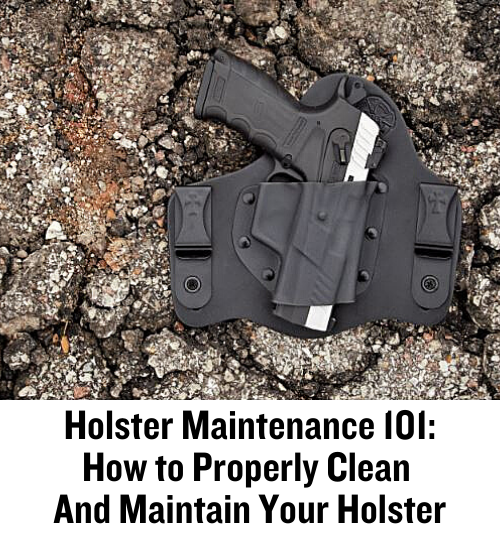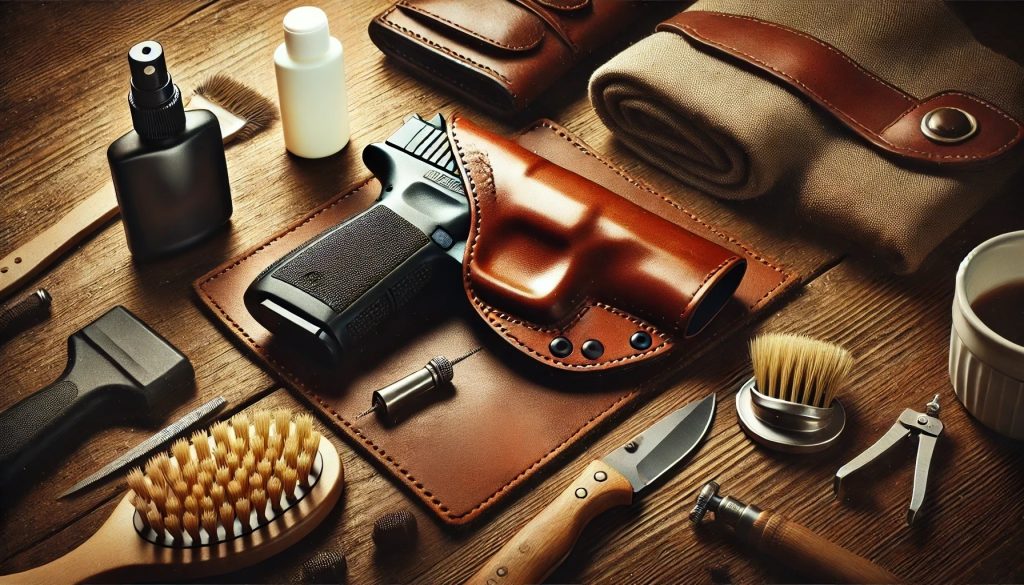When it comes to firearms, a holster is more than just an accessory—it’s an essential piece of gear that ensures your weapon is secure and accessible. Proper care and maintenance of your holster can extend its lifespan and ensure it performs its job effectively. Here are some practical tips to help you take care of your holster and keep it in top condition.
Regular Cleaning
Just like your firearm, your holster needs regular cleaning. Dust, dirt, and sweat can accumulate over time, leading to wear and tear. Here’s how to keep it clean:
- Leather Holsters: Use a damp cloth to wipe off any surface dirt. For a deeper clean, use a leather cleaner that’s specifically designed for the type of leather your holster is made from. Avoid using excessive water, as it can damage the leather. After cleaning, apply a leather conditioner to keep the leather supple and prevent it from drying out and cracking.
- Kydex Holsters: Kydex is relatively low-maintenance, but it can still get dirty. Simply wipe it down with a damp cloth. If there’s stubborn dirt, use a mild soap solution. Avoid harsh chemicals as they can damage the material.
- Nylon Holsters: These can usually be cleaned with a mild soap and water solution. Be sure to rinse thoroughly and let it air dry completely before using it again.
Regular cleaning not only keeps your holster looking good but also ensures it functions properly. A dirty holster can hinder the draw and re-holstering process, which can be dangerous in a critical situation.
Avoid Extreme Conditions
Exposure to extreme temperatures and humidity can adversely affect your holster. Leather can become brittle in extreme cold and may warp or stretch in high heat. Kydex, while more resilient, can still warp if left in direct sunlight or a hot car. Always store your holster in a cool, dry place.
Think of your holster as you would a fine pair of boots. Just as you wouldn’t leave your boots out in the elements, you shouldn’t expose your holster to harsh conditions. Consistent care will keep your gear reliable and ready for use.
Check for Wear and Tear
Regularly inspect your holster for signs of wear and tear. Look for:
- Cracks or Splits: Especially in leather holsters, cracks can develop over time. If you notice any, it might be time to consider a replacement.
- Loose Stitching: If the stitching is coming undone, the holster’s integrity is compromised. This is more common in leather and nylon holsters.
- Retention Issues: Make sure your holster still holds your firearm securely. If the retention is no longer reliable, it’s a safety risk.
Being proactive about these checks can save you from potential issues down the road. A compromised holster can be just as dangerous as a malfunctioning firearm.
Maintain Retention
Retention is key to a good holster. If your holster has adjustable retention screws, check them regularly to ensure they’re not loose. For leather holsters, the fit can change over time. Occasionally, you might need to wet-mold the leather to your firearm to maintain a snug fit.
Retention is what keeps your firearm in place, even during rigorous activities. Ensuring that your holster maintains proper retention is crucial for both safety and accessibility. For more details on retention, visit our Holster Retention Guide.
Condition the Leather
Leather holsters require regular conditioning to maintain their durability and appearance. Use a quality leather conditioner to keep the leather hydrated and flexible. Avoid over-conditioning, as this can make the leather too soft and affect the holster’s retention capabilities.
Conditioning your leather holster is like oiling a wooden stock—it preserves the material and enhances its longevity. A well-conditioned holster will not only perform better but also look better.
Keep It Dry
Moisture is the enemy of any holster. If your holster gets wet, dry it out as soon as possible. For leather holsters, blot the moisture with a dry cloth and let it air dry naturally. Avoid using direct heat sources like a hairdryer, as they can cause the leather to crack. For Kydex and nylon holsters, simply wiping them down and allowing them to air dry is usually sufficient.
Whether you’re caught in a rainstorm or dealing with sweat during a long day of carrying, always ensure your holster is dry before storing it. This practice helps prevent mold and mildew, particularly with leather holsters.
Proper Storage
When you’re not using your holster, store it properly. Keep it in a cool, dry place away from direct sunlight. If you have multiple holsters, consider using a holster rack to keep them organized and prevent them from being crushed or misshapen.
Proper storage is often overlooked but is essential for maintaining the shape and integrity of your holster. Just like storing your firearm in a safe and secure manner, your holster deserves the same level of care. For more storage tips, check out our Holster Storage Solutions.
Use the Right Belt
A good holster deserves a good belt. Using a sturdy, high-quality belt designed for carrying a firearm can make a big difference. A proper belt will provide the support needed to keep your holster in place and ensure quick access to your firearm when needed.
Investing in a quality belt designed for holster use is just as important as choosing the right holster. It ensures that your setup is stable, comfortable, and ready for action.
Keep Learning and Adapting
As with any skill or practice, continuous learning is key. Stay updated with new holster technologies and maintenance techniques. Engaging with a community of fellow enthusiasts, such as those on CrossBreed Holsters’ forum, can provide valuable insights and tips.
By consistently applying these care and maintenance tips, you’ll ensure that your holster remains in excellent condition for years to come. Remember, a well-maintained holster not only protects your firearm but also ensures your safety and readiness in any situation. Happy carrying, and stay safe!
Taking the time to care for your holster is an investment in your overall safety and performance. Just as you maintain your firearm, dedicating effort to your holster’s upkeep will pay off in reliability and longevity. So, treat your holster with the respect it deserves, and it will serve you well through countless adventures and daily carry situations.

Sam Jacobs is a passionate advocate for Second Amendment rights and an avid historian. As lead writer for Ammo.com, he delves into the intersection of firearms, freedom, and corporate power. With a penchant for defending individual liberties, his work sparks discussions in various publications and platforms.
![]() You may also enjoy these popular articles:
You may also enjoy these popular articles:




©MTC Holsters, LLC and CrossBreed Holsters Blog, 2024.
Unauthorized use and/or duplication of this material without express and written permission from this site’s author and/or owner is strictly prohibited. Excerpts and links may be used, provided that full and clear credit is given to David Workman and the CrossBreed Blog with appropriate and specific direction to the original content.

